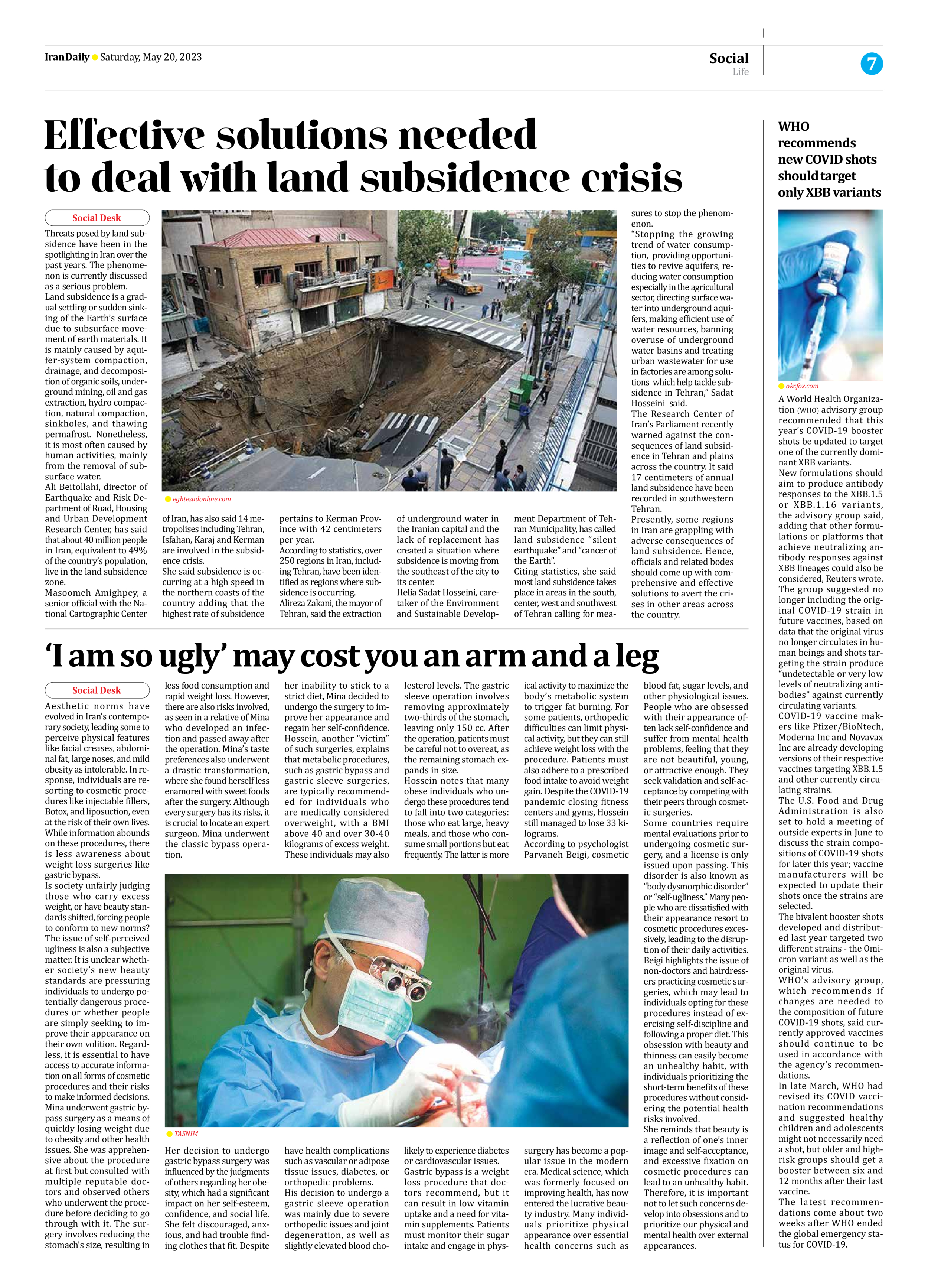
Effective solutions needed to deal with land subsidence crisis
Threats posed by land subsidence have been in the spotlighting in Iran over the past years. The phenomenon is currently discussed as a serious problem.
Land subsidence is a gradual settling or sudden sinking of the Earth’s surface due to subsurface movement of earth materials. It is mainly caused by aquifer-system compaction, drainage, and decomposition of organic soils, underground mining, oil and gas extraction, hydro compaction, natural compaction, sinkholes, and thawing permafrost. Nonetheless, it is most often caused by human activities, mainly from the removal of subsurface water.
Ali Beitollahi, director of Earthquake and Risk Department of Road, Housing and Urban Development Research Center, has said that about 40 million people in Iran, equivalent to 49% of the country’s population, live in the land subsidence zone.
Masoomeh Amighpey, a senior official with the National Cartographic Center of Iran, has also said 14 metropolises including Tehran, Isfahan, Karaj and Kerman are involved in the subsidence crisis.
She said subsidence is occurring at a high speed in the northern coasts of the country adding that the highest rate of subsidence pertains to Kerman Province with 42 centimeters per year.
According to statistics, over 250 regions in Iran, including Tehran, have been identified as regions where subsidence is occurring.
Alireza Zakani, the mayor of Tehran, said the extraction of underground water in the Iranian capital and the lack of replacement has created a situation where subsidence is moving from the southeast of the city to its center.
Helia Sadat Hosseini, caretaker of the Environment and Sustainable Development Department of Tehran Municipality, has called land subsidence “silent earthquake” and “cancer of the Earth”.
Citing statistics, she said most land subsidence takes place in areas in the south, center, west and southwest of Tehran calling for measures to stop the phenomenon.
“Stopping the growing trend of water consumption, providing opportunities to revive aquifers, reducing water consumption especially in the agricultural sector, directing surface water into underground aquifers, making efficient use of water resources, banning overuse of underground water basins and treating urban wastewater for use in factories are among solutions which help tackle subsidence in Tehran,” Sadat Hosseini said.
The Research Center of Iran’s Parliament recently warned against the consequences of land subsidence in Tehran and plains across the country. It said 17 centimeters of annual land subsidence have been recorded in southwestern Tehran.
Presently, some regions in Iran are grappling with adverse consequences of land subsidence. Hence, officials and related bodes should come up with comprehensive and effective solutions to avert the crises in other areas across the country.







